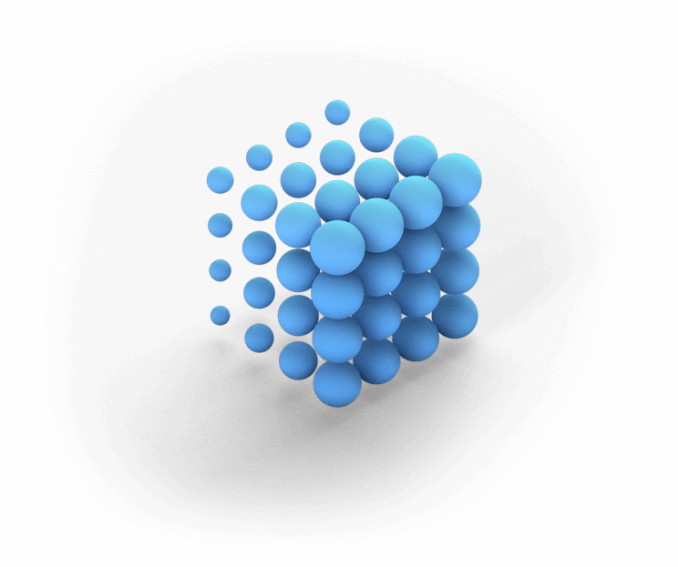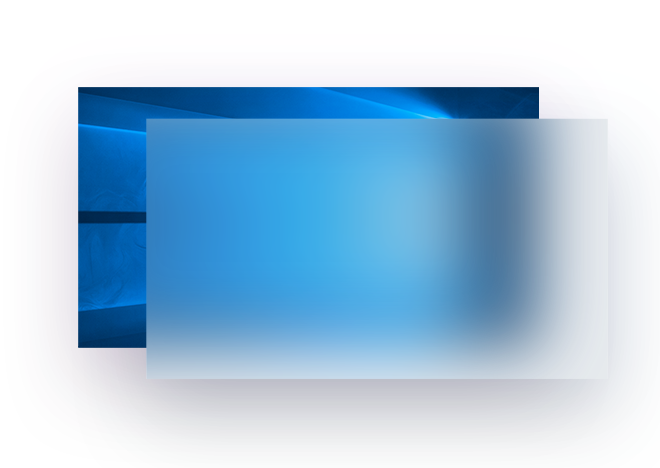The Microsoft Build 2017 Recap: What To Expect When You’re Expecting Windows
by Brett Howse on May 19, 2017 8:00 AM ESTFluent Design
There are quite a few changes coming up with the Fall Creators Update, but none are going to be more noticeable than the Fluent Design being introduced. The look and feel of Windows has evolved significantly over the years, but Microsoft made a substantial change to a more modern design (*cough* Metro *cough) which really moved away from the skeuomorphic look of the physical world into a flatter, sleeker look with Windows 8. Not everyone appreciated the extreme flat design though, and Microsoft has evolved the look especially with Windows 10 which did move back to a few of the layering effects with some drop shadows coming back, and a few other design tweaks, but the overall design language for Windows and the apps kept a similar feel to Windows 8.
With Fluent Design, Microsoft is making as big of a change to the design language as they did when they moved from Windows 7 to Windows 8. That may sound scary to some, but they felt it was important to tackle this now. When the modern look came along, Microsoft was trying to address new device types with touch as a first-class citizen, and although they arguably went too far with touch in Windows 8, Windows 10 has a great balance for touch while keeping the existing keyboard, mouse, or trackpad input methods as equals with touch. But the gamut of devices has grown again. The amount of computing devices has grown from mainly 2D display based products to now include both 3D in mixed reality, along with 0D devices like IoT, body-worn devices, and voice-activated devices like Amazon’s Echo or the just announced Harman Kardon Invoke voice-activated speaker powered by Cortana. Display based devices work with more traditional input methods like touch, keyboard, mouse, and pen, but mixed reality and devices without displays need to work with voice, gaze, and motion, and Fluent Design is going to attempt to allow interaction from all these input methods.
Fluent Design is based on five ideas: light, depth, motion, material, and scale. Although discussion is required, Microsoft did do a promotional video on the new system.
The light is going to be very useful across multiple input types, with mixed reality likely seeing the most benefit of a light-based gaze input. Right now, Windows 10 offers a highlight for selected items in the Start Menu, as an example, but with Fluent Design the experience will be much more immersive. There are some great use cases for light to assist with selection, especially in a grid-based selection like when you sort by alphabet.
Windows 8 went extreme on the flat design look, and Microsoft has pulled back somewhat over the last several releases on this, but with Fluent Design, depth is once again being used as not only an accent, but also for layering for applications so the actionable information is layered to the top. The depth is much more than just drop shadows, with parallax scrolling available for backgrounds, and more.
Motion is going to be highly leveraged for moving into and out of applications, as well as inside of applications, in order to provide some perspective on where you are. Perhaps as you drill into an app, you’ll see inward movement, but then as you go back, the app will show outward movement, so there is an instant connection to the user on where they are going. Microsoft is also looking to use movement to improve the transitions between different applications, and within Windows itself. They need to be careful they don’t add too much delay, or allow adjustment for the end user, but it should help with some of the jarring experiences seen now.
Material is going to be a large part of Fluent Design, and although this is Aero 2.0, it’s also much more than just Aero effects of blurring and glass type looks. Instead of just background colors and blur, they will be doing multiple layers with Gaussian blur, exclusion blend, color and tint overlays, and tiled noise texture. The acrylic material look can be used for layering in addition to depth, and the materials are going to add a lot more texture to the look of Windows.
Scale is becoming much more important as well, when you consider how Windows can be adapted to so many different device types. Fluent Design can be used to scale an app all the way from a 10-foot UI for the Xbox, down to a mobile device or tablet.
Fluent Design is not going to be just a Fall Creators Update feature either. This is just the first wave of an overhaul which will be ongoing for some time. As with anything in Windows now, with a relatively fast update cadence, it makes sense to release these types of updates in waves for several reasons. You don’t want to overwhelm people with massive changes, so by doing it in waves you can allow them to get used to the new changes in smaller bites. Also, you can use the wave approach to fine tune and adjust the idea through real world use. Perhaps some of the acrylic blur is going to cause contrast issue with text, so it may have to be adjusted, as an example.
Although to some it may seem that this is just eye candy, it’s important to keep the interface fresh and modern looking. It’s very easy to fall into the trap of keeping something that works ok just because people are familiar with it, but not using the interface as something that can be adjusted and improved over time.
Microsoft also made the point that Fluent Design can have effects turn on or off on the fly based on events. For instance, when running an app in a full-screen view, it may not make sense to have some of the background coming through. Effects can also be disabled based on the system power state, so if you need to eke out the maximum battery life on a long stint away from power, it may not make sense to have some of these effects available.
The key point though is that Microsoft is using this UI overhaul as a way to make improvements in device types that are not just typical laptops or desktops. The light and gaze features coming should make mixed reality control much easier, and input with keyboard, mouse, trackpad, pen, touch, voice, sight, and gesture, all need to be addressed. So far Microsoft has shown off several apps that have already been updated to the new design language, and it looks great. This is certainly going to be one of the key features coming in the Fall Creators Update.













85 Comments
View All Comments
Meteor2 - Saturday, May 20, 2017 - link
One way of thinking about it could be the amount of value created per platform (as GDP type value). While there's probably more mobile client devices around than desktops/laptops, I bet the large majority of value comes from the latter, and always will.mkozakewich - Tuesday, May 23, 2017 - link
While I was impressed by the Stream 7 and other $100 Windows devices, I do wish we had some higher-priced options. I'd love a 7" tablet with OLED, Gorilla Glass, and 4 GB of RAM.BrokenCrayons - Friday, May 19, 2017 - link
I know Linux is still basically a rounding error worth of installed systems, but since Windows 8 was released, the number numbers have show very slow, but steady increases. The fact that it's consistently above 2% now is pretty cool, but for those of us using it, I wouldn't bother celebrating yet. It's got a long way to go before it becomes a significant factor.peevee - Friday, May 19, 2017 - link
"The fact that it's consistently above 2% now is pretty cool"Probably the result of Chinese and Russian governments not wanting to use Windows or MacOS and switching to their domestically cooked distros of Linux.
Meteor2 - Saturday, May 20, 2017 - link
Is that a thing? After all, the Russian government was hit by WannaCry.versesuvius - Saturday, May 20, 2017 - link
People grow up gaming on Windows and along the way pick up some other software which they learn and become dependent on and when they are engineers, doctors, lawyers or housewives or jobless or whatever keep on playing games and software. There is nothing that Linux does not do better than Windows except gaming. That is the whole idea of Windows and as long as Windows is a good platform for gaming the same story repeats itself ad infinitum. Unless of course Linux starts paying more attention to gaming and there is a Linux version of popular games on the market. Another thing that that plays a part in the popularity of Windows albeit not as much as the above is what the late Dennis Ritchie described as its "feeling of Snappiness". The apps do not load any faster on Windows than on Linux and Linux even loads them faster most of the time but the Windows feels snappy, so people feel that are doing something more or their time is not being wasted whereas in reality the time that Windows wastes for its users is almost equal or even more than the time that people spend time actually doing something on Windows.sadsteve - Saturday, May 20, 2017 - link
I now dual boot Windows 10 and Mint Linux. Linux definitely boots up faster for me. It's to the point where the only time I boot Windows is to play a game that's not available on Linux. l could even use Linux for work, if my company would let me, since all the tools I use are available for both OSes.anactoraaron - Friday, May 19, 2017 - link
So with this next major update will they finally stop this insane automatic download and install of garbage apps? Just had to refresh a pc that would no longer join my domain and watched in horror as windows automatically downloaded and installed 10+ apps. Eclipse manager, pandora, adobe express, on and on the apps kept coming. Why oh why do they do this?neogodless - Friday, May 19, 2017 - link
What brand computer? Was this configured by the manufacturer to do this? I've never seen this on a clean install of Windows 10. (Just one... to four... data point(s), though!)Macpoedel - Saturday, May 20, 2017 - link
I have seen this on a clean Windows install, last weekend I installed Windows 10 Pro v1703 (Creator's update) on a NUC, latest iso at that time, and it tried to install all kinds of apps from the Play Store. I don't think Intel could configure this if I brought my own iso, download from Microsoft's website. Maybe hardware manufacturers also have the capability to mark apps as "updates" even when you're using your own install media (kind of like drivers?), but I think this was Microsoft's doing.At first I thought this was some leftover from using the same account on a branded laptop earlier, those apps got tied to my account library and Windows 10 tries to install all of the apps in the library when you set things up. But on the other hand, I haven't setup a branded machine running the factory image since Windows 7... And also, the UWP apps that I actively have installed on other machines, didn't get installed automatically.
So unless my girlfriend is installing those apps behind my back, Microsoft is pushing those apps on us.